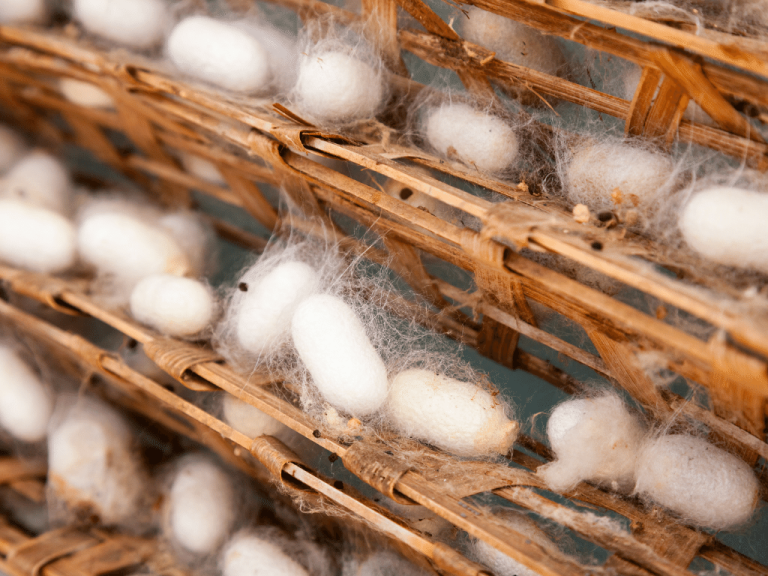Silkworm breeders prefer to raise more male silkworms because males produce more silk than females. Typically, male silkworms have slightly smaller bodies, shorter growth periods, and consume slightly less mulberry leaves compared to females; however, females are heavier in terms of weight. Under these circumstances, one might expect females to produce more silk than males. But why do male silkworms actually produce more silk than females? This can be explained by discussing the characteristics of both male and female silkworms.
After consuming mulberry leaves, female silkworms undergo digestion and absorption, converting nutrients into useful substances within their bodies. These substances serve three main purposes: supplying nutrients for the growth of various organs in the body, consuming energy as internal fuel, and storing some substances. Anything that cannot be utilized is excreted from the body. When it’s time to spin cocoons, the substances within the female silkworm’s body undergo significant changes. Some of these substances are excreted from the silk glands, forming the silk threads known as cocoons. Another portion of the substances must be transformed into various organs of the silkworm moth, especially the eggs of the female moth. We know that female silkworm moths can lay many eggs, all of which are formed from the substances within their bodies. Although female silkworms store more substances internally, due to this allocation process, there is relatively less material available for silk spinning. This is because female silkworm moths must allocate a significant amount of bodily substances for the growth of egg cells to fulfill their reproductive duties.
On the other hand, male silkworms consume substances within their bodies similar to female silkworms, but the amount needed for the development of reproductive glands is relatively less. Consequently, male silkworms allocate more substances for spinning silk and forming cocoons. Due to the different utilization of internal substances, male silkworms produce less silk than female silkworms. Of course, not all silkworm varieties follow this pattern; some female silkworms may produce slightly more silk than males.

